Further Stability Criteria for Sampled-Data-Based Dynamic Positioning Ships Using Takagi–Sugeno Fuzzy Models
Abstract
:1. Introduction
2. Problem Formulation
3. Main Results
3.1. Construction of the Lyapunov Function
3.2. Introduction of Fuzzy Framework
3.3. Design of Sampled-Data Controller
4. Numerical Examples
5. Conclusions
Author Contributions
Funding
Data Availability Statement
Conflicts of Interest
References
- Fossen, T.I. Guidance and Control of Ocean Vehicles; Wiley: New York, NY, USA, 1994. [Google Scholar]
- Wang, Y.L.; Han, Q.L.; Fei, M.R.; Peng, C. Network-based T-S fuzzy dynamic positioning controller design for unmanned marine vehicles. IEEE Trans. Cybern. 2018, 48, 2750–2763. [Google Scholar] [CrossRef]
- Hao, L.Y.; Zhang, H.; Li, T.S.; Lin, B.; Chen, C.P. Fault tolerant control for dynamic positioning of unmanned marine vehicles based on T-S fuzzy model with unknown membership functions. IEEE Trans. Veh. Technol. 2021, 70, 146–157. [Google Scholar] [CrossRef]
- Veksler, A.; Johansen, T.A.; Borrelli, F.; Realfsen, B. Dynamic positioning with model predictive control. IEEE Trans. Control Syst. Technol. 2016, 24, 1340–1353. [Google Scholar] [CrossRef]
- Nguyen, V.S. Investigation of a multitasking system for automatic ship berthing in marine practice based on an integrated neural controller. Mathematics 2020, 8, 1167. [Google Scholar] [CrossRef]
- Benetazzo, F.; Ippoliti, G.; Longhi, S.; Raspa, P. Advanced control for fault-tolerant dynamic positioning of an offshore supply vessel. Ocean Eng. 2015, 106, 472–484. [Google Scholar] [CrossRef]
- Karimi, H.R.; Lu, Y. Guidance and control methodologies for marine vehicles: A survey. Control Eng. Pract. 2021, 111, 104785. [Google Scholar] [CrossRef]
- Wang, Y.; Yang, X.; Yan, H. Reliable fuzzy tracking control of near-space hypersonic vehicle using aperiodic measurement information. IEEE Trans. Ind. Electron. 2019, 66, 9439–9447. [Google Scholar] [CrossRef]
- Karimi, H.R. Robust H∞ filter design for uncertain linear systems over network with network-induced delays and output quantization. Nor. Foren. Autom. 2009, 30, 27–37. [Google Scholar] [CrossRef]
- Kiruthika, R.; Krishnasamy, R.; Lakshmanan, S.; Prakash, M.; Manivannan, A. Non-fragile sampled-data control for synchronization of chaotic fractional-order delayed neural networks via LMI approach. Chaos Solitons Fractals 2023, 169, 113252. [Google Scholar] [CrossRef]
- Wang, Y.; Xia, Y.; Zhou, P. Fuzzy-model-based sampled-data control of chaotic systems: A fuzzy time-dependent Lyapunov–Krasovskii functional approach. IEEE Trans. Fuzzy Syst. 2016, 25, 1672–1684. [Google Scholar] [CrossRef]
- Wang, Y.; Shi, P. On master-slave synchronization of Chaotic Lur’e systems using sampled-data control. IEEE Trans. Circuits Syst. II Express Briefs 2016, 85, 981–992. [Google Scholar] [CrossRef]
- Chen, W.-H.; Wang, Z.; Lu, X. On sampled-data control for masterslave synchronization of chaotic Lur’e systems. IEEE Trans. Circuits Syst. II Express Briefs 2012, 59, 515–519. [Google Scholar]
- Wu, Z.-G.; Shi, P.; Su, H.; Chu, J. Local synchronization of chaotic neural networks with sampled-data and saturating actuators. IEEE Trans. Cybern. 2014, 44, 2635–2645. [Google Scholar]
- Wu, Z.G.; Shi, P.; Su, H.Y. Stochastic Synchronization of Markovian Jump Neural Networks with Time-Varying Delay Using Sampled Data. IEEE Trans. Cybern. 2013, 43, 796–1806. [Google Scholar] [CrossRef] [PubMed]
- Karimi, H.R.; Gao, H. Mixed H2/H∞ output-feedback control of second-order neutral systems with time-varying state and input delays. ISA Trans. 2008, 47, 311–324. [Google Scholar] [CrossRef]
- Wei, Y.; Karimi, H.R.; Yang, S. New results on sampled-data output-feedback control of linear parameter-varying systems. Int. J. Robust Nonlinear Control 2022, 32, 5070–5085. [Google Scholar] [CrossRef]
- Li, S.; Yang, L.; Li, K.; Gao, Z. Robust sampled-data cruise control scheduling of high speed train. Transp. Res. Part C Emerg. Technol. 2014, 46, 274–283. [Google Scholar] [CrossRef]
- Wang, Y.; Wang, Q.; Zhou, P.; Duan, D. Robust H∞ directional control for a sampled-data autonomous airship. J. Cent. South Univ. 2014, 21, 1339–1346. [Google Scholar] [CrossRef]
- Zheng, M.; Zhou, Y.; Yang, S.; Li, L. Robust H∞ control of neutral system for sampled-data dynamic positioning ships. IMA J. Math. Control Inf. 2019, 36, 1325–1345. [Google Scholar] [CrossRef]
- Zou, Z.; Zheng, M. Design and stabilization analysis of luxury cruise with dynamic positioning systems based on sampled-data control. Math. Biosci. Eng. 2023, 20, 14026–14045. [Google Scholar] [CrossRef] [PubMed]
- Zheng, M.; Su, Y.; Yang, S.; Li, L. Reliable fuzzy dynamic positioning tracking controller for unmanned surface vehicles based on aperiodic measurement information. Int. J. Fuzzy Syst. 2023, 25, 358–368. [Google Scholar] [CrossRef]
- Castro, M.F.; Seuret, A.; Leite, V.J.; Silva, L.F. Robust local stabilization of discrete time varying delayed state systems under saturating actuators. Automatica 2020, 122, 109266. [Google Scholar] [CrossRef]
- Ge, G.; Lei, D.; Han, Q. A distributed event-triggered transmission strategy for sampled-data consensus of multi-agent systems. Automatica 2014, 50, 1489–1496. [Google Scholar]
- Zhang, X.; Han, Q.; Zhang, B. An overview and deep investigation on sampled-data-based event-triggered control and filtering for networked systems. IEEE Trans. Ind. Inform. 2017, 13, 4–16. [Google Scholar] [CrossRef]
- Yan, L.; Wang, Z.; Zhang, M.; Fan, Y. Sampled-data control for mean-square exponential stabilization of memristive neural networks under deception attacks. Chaos Solitons Fractals 2023, 174, 113787. [Google Scholar] [CrossRef]
- Yerudkar, A.; Chatzaroulas, E.; Del Vecchio, C.; Moschoyiannis, S. Sampled-data control of probabilistic boolean control networks: A deep reinforcement learning approach. Inf. Sci. 2023, 619, 374–389. [Google Scholar] [CrossRef]
- Wang, Y.; Karimi, H.R.; Lam, H.K.; Shen, H. An improved result on exponential stabilization of sampled-data fuzzy systems. IEEE Trans. Fuzzy Syst. 2018, 26, 3875–3883. [Google Scholar] [CrossRef]
- Yan, S.; Gu, Z.; Park, J.H.; Xie, X. Adaptive memory-event-triggered static output control of T–S fuzzy wind turbine systems. IEEE Trans. Fuzzy Syst. 2021, 30, 3894–3904. [Google Scholar] [CrossRef]
- Cai, X.; Shi, K.; She, K.; Zhong, S.; Tang, Y. Quantized sampled-data control tactic for TS fuzzy NCS under stochastic cyber-attacks and its application to truck-trailer system. IEEE Trans. Veh. Technol. 2022, 71, 7023–7032. [Google Scholar] [CrossRef]
- Wang, Y.; Xia, Y.; Ahn, C.K.; Zhu, Y. Exponential stabilization of takagi–sugeno fuzzy systems with aperiodic sampling: An aperiodic adaptive event-triggered method. IEEE Trans. Syst. Man Cybern. Syst. 2019, 49, 444–454. [Google Scholar] [CrossRef]
- Sheng, Z.; Lin, C.; Chen, B.; Wang, Q.-G. Stability and Stabilization of TS Fuzzy Time-delay Systems under Sampled-data Control via New Asymmetric Functional Method. IEEE Trans. Fuzzy Syst. 2023, 31, 3197–3209. [Google Scholar] [CrossRef]
- Velmurugan, G.; Joo, Y.H. Sampled-Data Control Design for T-S Fuzzy System via Quadratic Function Negative Determination Approach. IEEE Trans. Fuzzy Syst. 2023, 31, 3197–3209. [Google Scholar] [CrossRef]
- Katayama, H. Nonlinear Sampled-Data Stabilization of Dynamically Positioned Ships. IEEE Trans. Control Syst. Technol. 2010, 18, 463–468. [Google Scholar] [CrossRef]
- Katayama, H.; Aoki, H. Straight-line trajectory tracking control for sampled-data underactuated ships. IEEE Trans. Control Syst. Technol. 2014, 22, 1638–1645. [Google Scholar]
- Zheng, M.; Zhou, Y.; Yang, S.; Suo, Y.; Li, L. Robust H∞ Control for Sampled-data Dynamic Positioning Ships. J. Control Eng. Appl. Inform. 2017, 19, 84–92. [Google Scholar] [CrossRef]
- Yang, S.; Zheng, M. H-infinity Fault-Tolerant Control for Dynamic Positioning Ships based on Sampled-data. J. Control Eng. Appl. Inform. 2018, 20, 32–39. [Google Scholar]
- Zheng, M.; Yang, S.; Li, L. Stability analysis and T-S fuzzy dynamic positioning controller design for autonomous surface vehicles based on sampled-data control. IEEE Access 2020, 8, 148193–148202. [Google Scholar] [CrossRef]
- Chen, G.; Suo, Y.; Zheng, M.; Yang, S.; Li, L. Reliable tracking control of dynamic positioning ships based on aperiodic measurement information. J. Control Eng. Appl. Inform. 2022, 24, 80–89. [Google Scholar]
- Sun, J.; Liu, G.P.; Chen, J. Delay-dependent stability and stabilization of neutral time-delay systems. Int. J. Robust Nonlinear Control 2009, 19, 1364–1375. [Google Scholar] [CrossRef]
- Tannuri, E.; Agostinho, A.; Morishita, H.; Moratelli, L. Dynamic positioning systems: An experimental analysis of sliding mode control. Control Eng. Pract. 2010, 18, 1121–1132. [Google Scholar] [CrossRef]
- Garai, A.; Mandal, P.; Roy, T.K. Multipollutant air quality management strategies: T-Sets based optimization technique under imprecise environment. Int. J. Fuzzy Syst. 2017, 19, 1927–1939. [Google Scholar] [CrossRef]
- Garai, A.; Mondal, B.; Roy, T.K. Optimisation of multi-objective commercial bank balance sheet management model: A parametric T-set approach. Int. J. Math. Oper. Res. 2019, 15, 395–416. [Google Scholar] [CrossRef]
- Garai, A.; Mandal, P.; Roy, T.K. Intuitionistic fuzzy T-sets based optimization technique for production-distribution planning in supply chain management. Opsearch 2016, 53, 950–975. [Google Scholar] [CrossRef]
- Hu, X.; Du, J.; Shi, J. Adaptive fuzzy controller design for dynamic positioning system of vessels. Appl. Ocean Res. 2015, 53, 46–53. [Google Scholar] [CrossRef]
- De la Sen, M. Robust stability of a class of linear time-varying systems. IMA J. Math. Control Inf. 2002, 19, 399–418. [Google Scholar] [CrossRef]
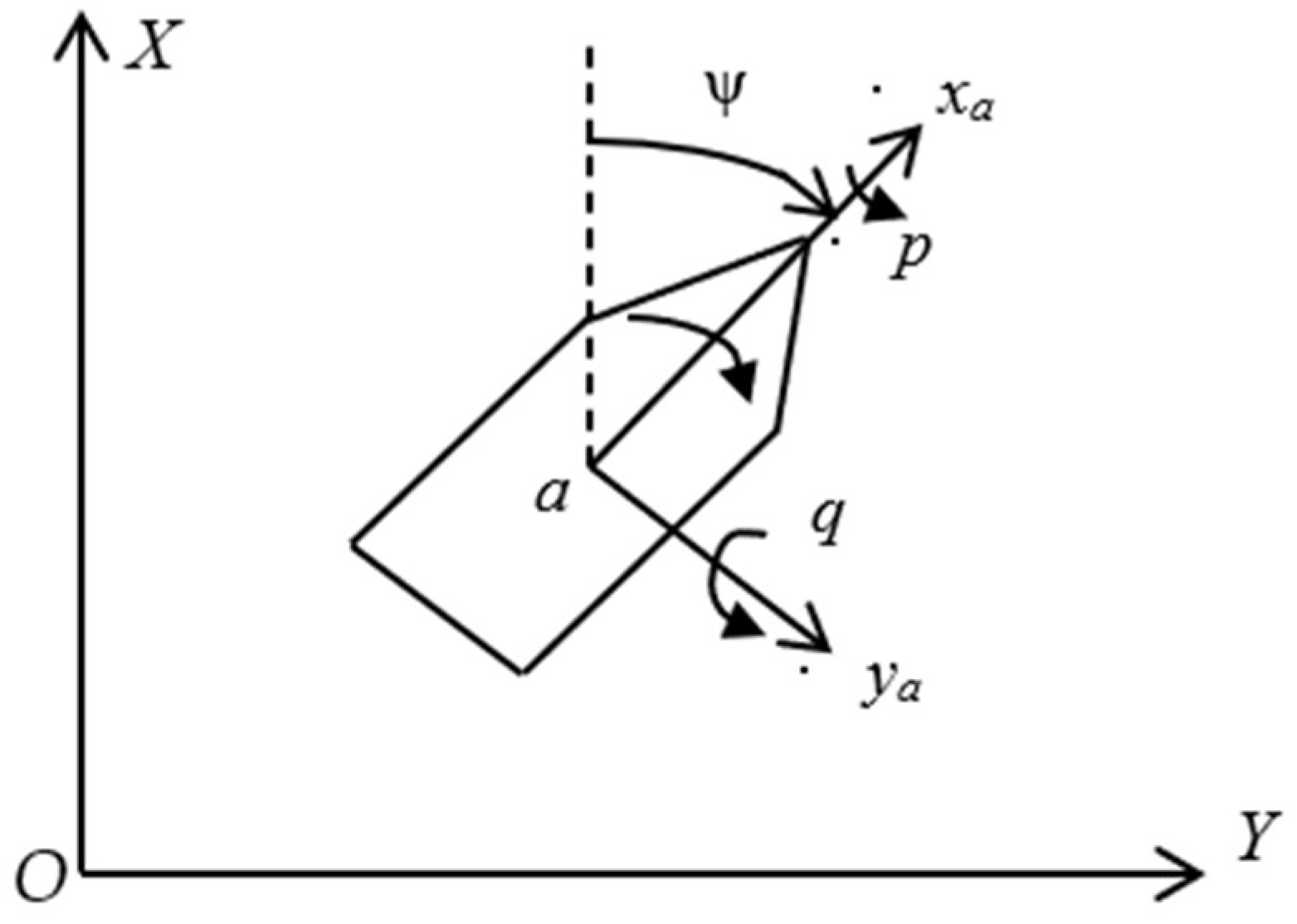

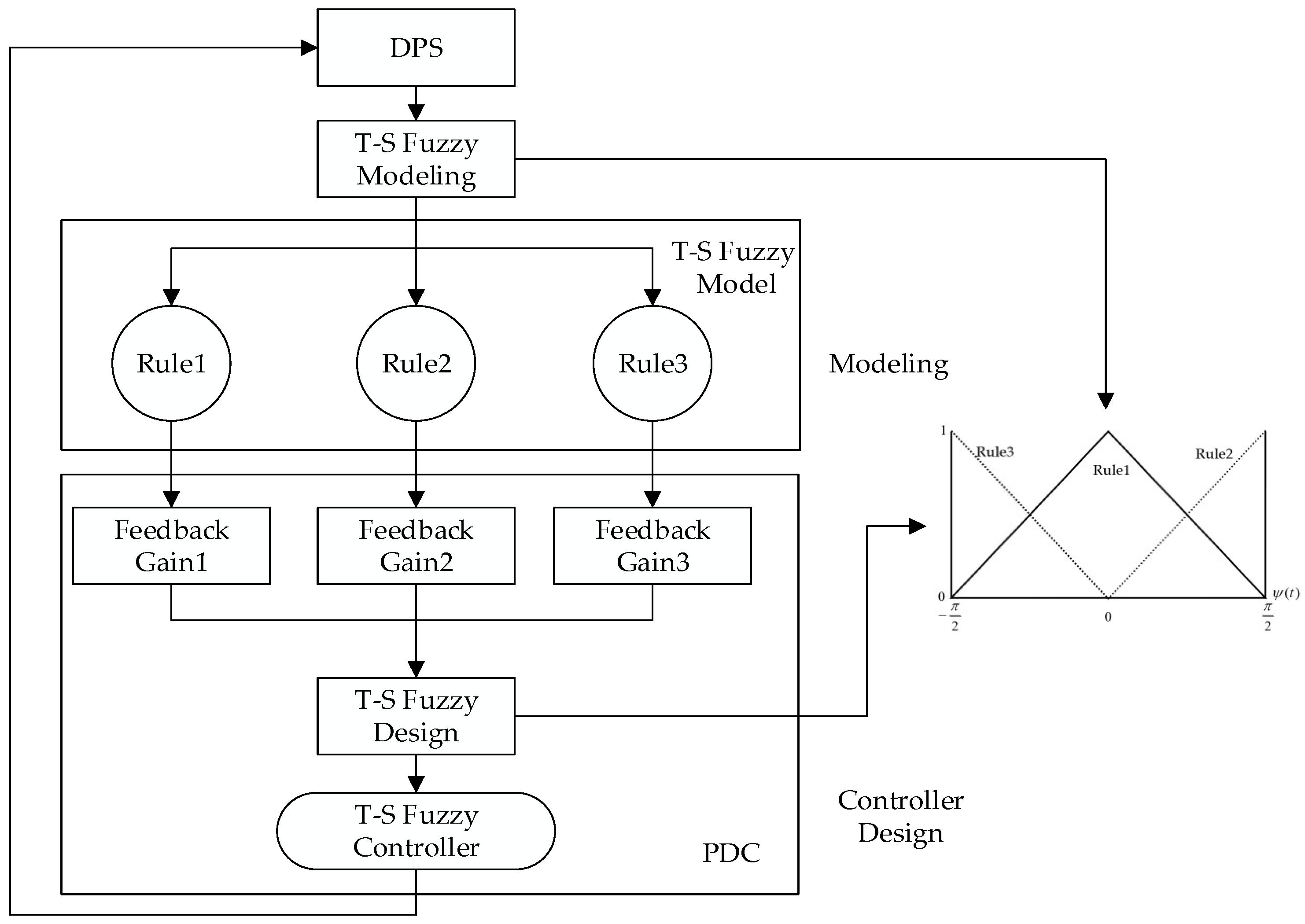
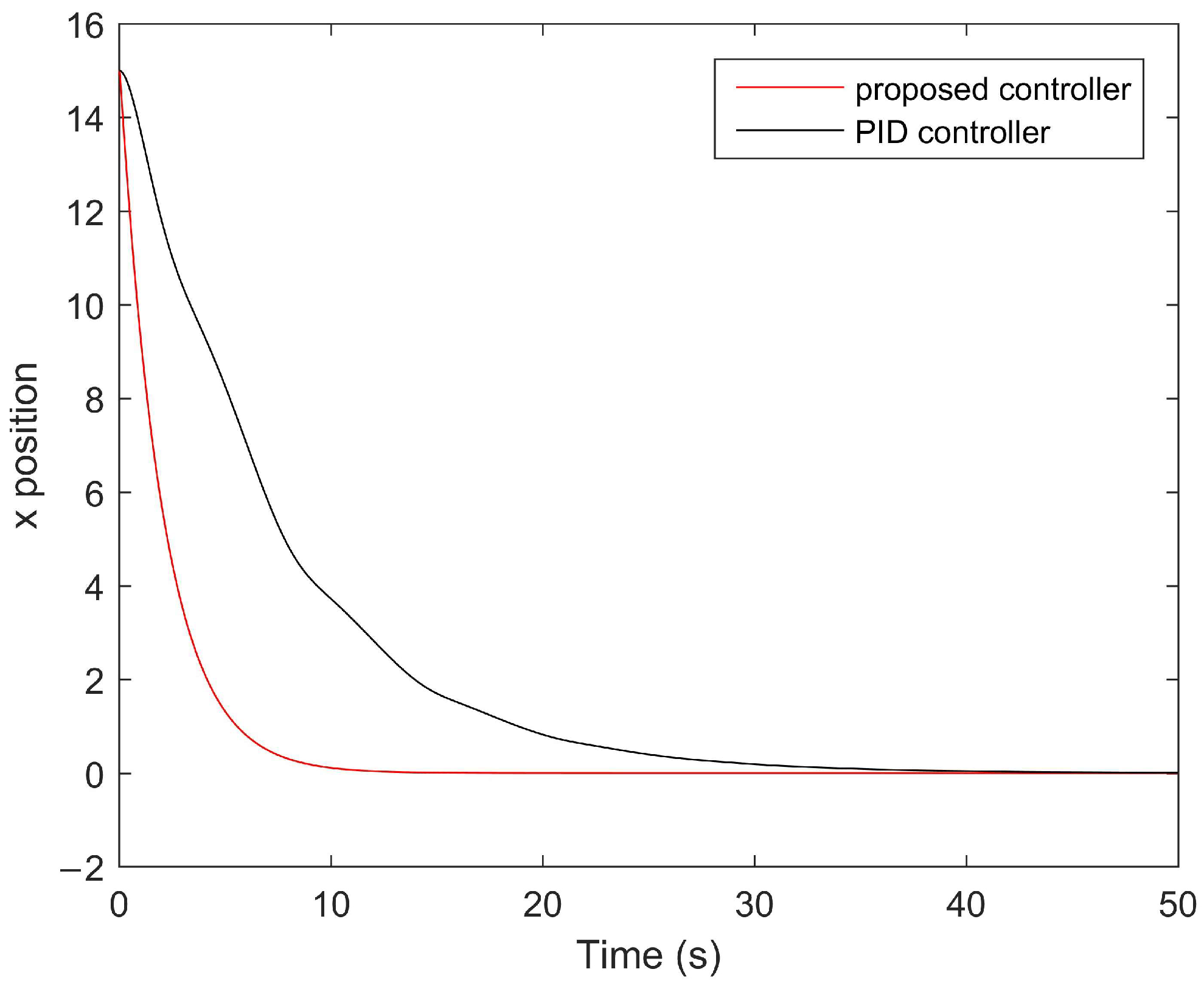
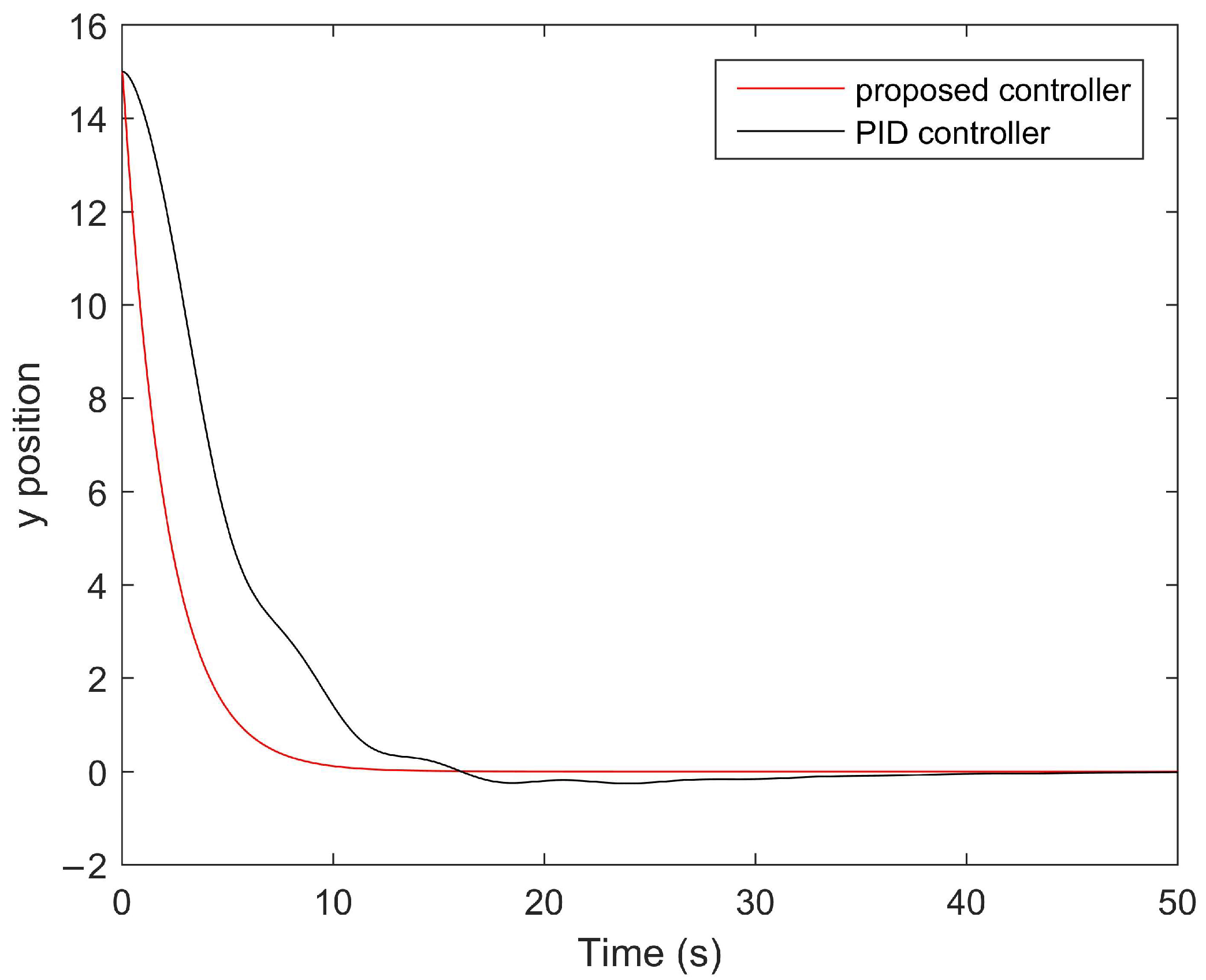

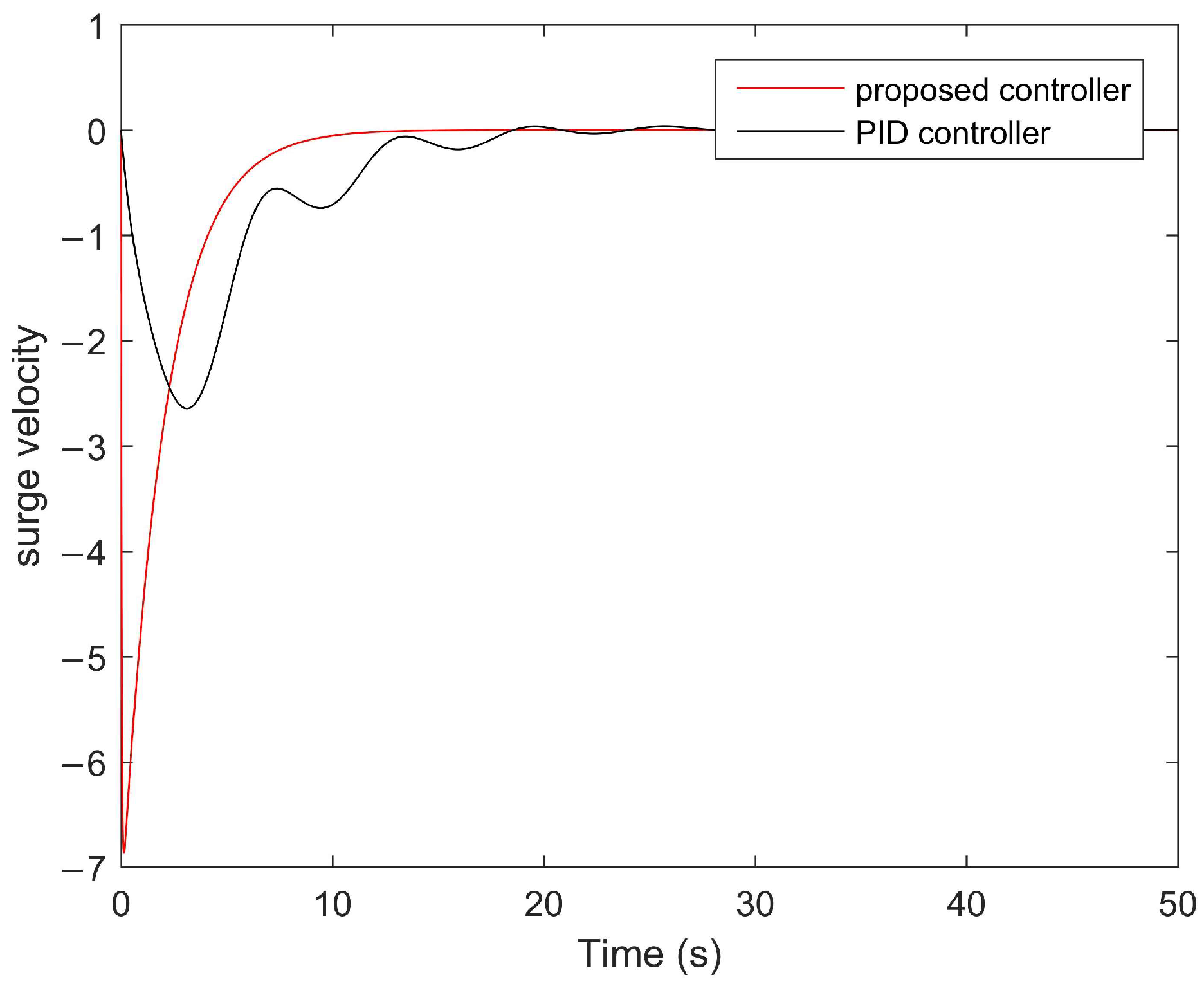
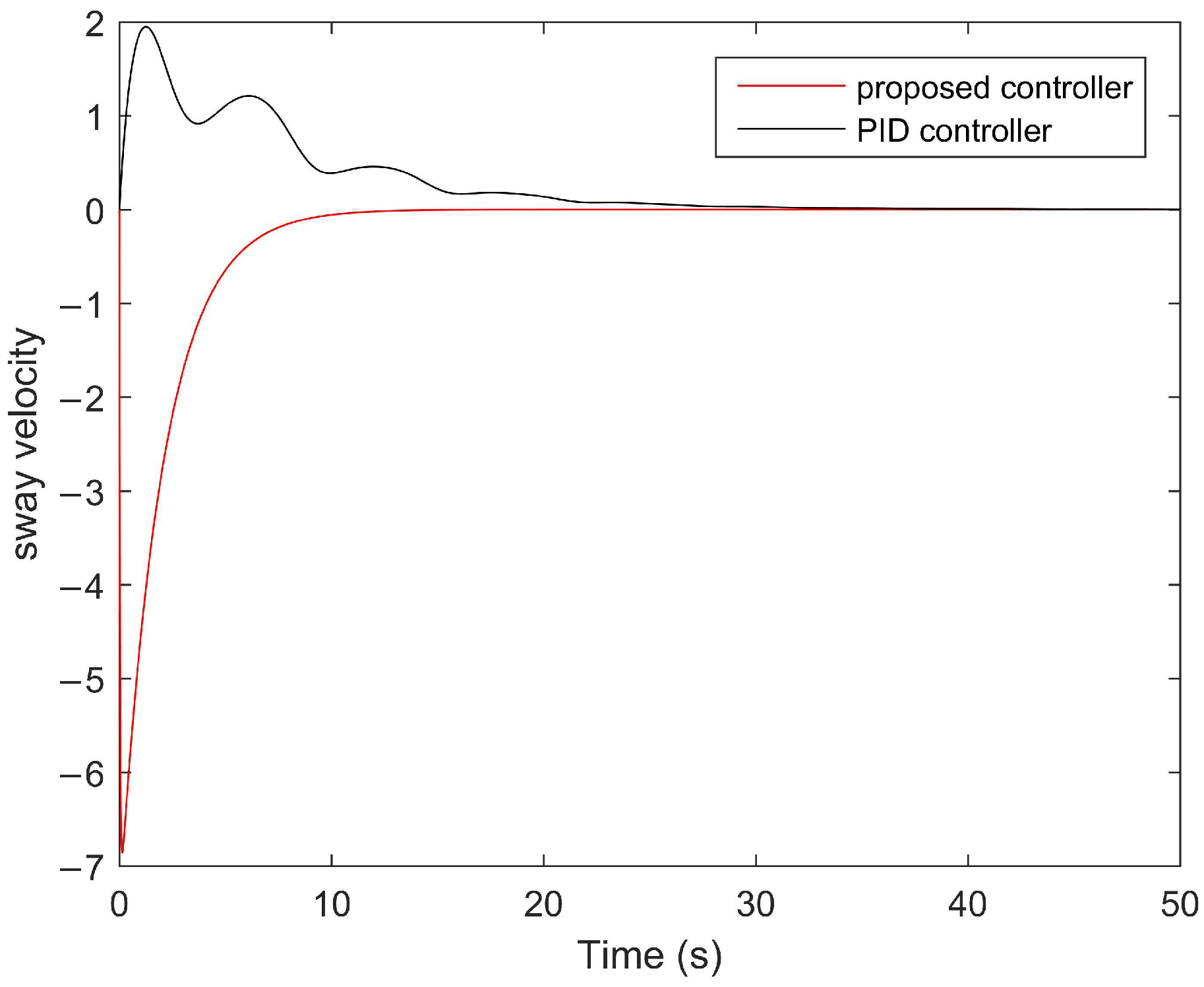
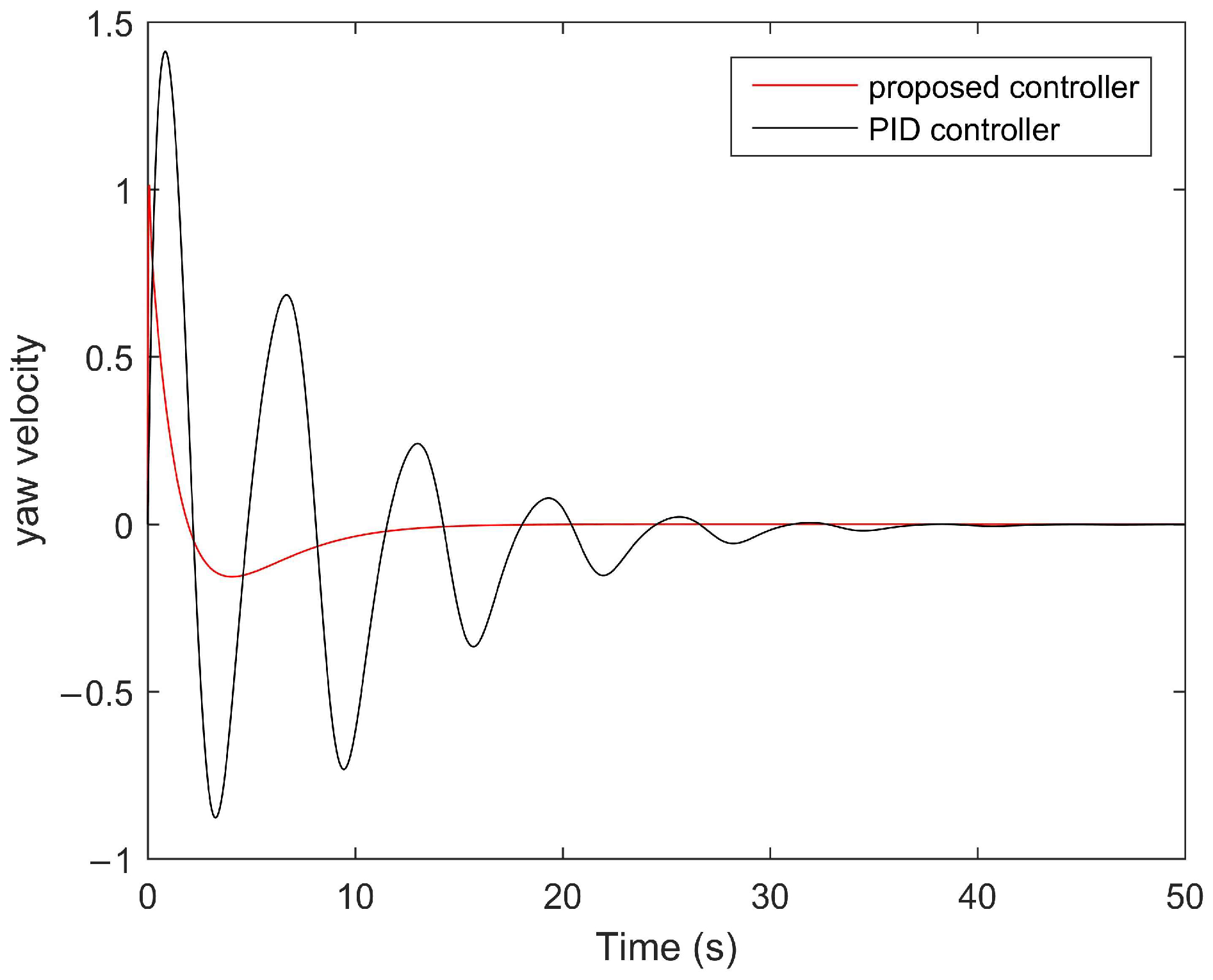
| Method | [37] | [38] | [39] | Theorem 1 |
|---|---|---|---|---|
| d2 | 0.25 | 0.264 | 0.532 | 0.681 |
| Technologies | Maximum Sampling Internal |
|---|---|
| T-set | 0.583 |
| Pareto optimality under T-set | 0.624 |
| Intuitionistic fuzzy T-set | 0.652 |
| Proposed method | 0.681 |
Disclaimer/Publisher’s Note: The statements, opinions and data contained in all publications are solely those of the individual author(s) and contributor(s) and not of MDPI and/or the editor(s). MDPI and/or the editor(s) disclaim responsibility for any injury to people or property resulting from any ideas, methods, instructions or products referred to in the content. |
© 2024 by the authors. Licensee MDPI, Basel, Switzerland. This article is an open access article distributed under the terms and conditions of the Creative Commons Attribution (CC BY) license (https://creativecommons.org/licenses/by/4.0/).
Share and Cite
Zheng, M.; Su, Y.; Yan, C. Further Stability Criteria for Sampled-Data-Based Dynamic Positioning Ships Using Takagi–Sugeno Fuzzy Models. Symmetry 2024, 16, 108. https://doi.org/10.3390/sym16010108
Zheng M, Su Y, Yan C. Further Stability Criteria for Sampled-Data-Based Dynamic Positioning Ships Using Takagi–Sugeno Fuzzy Models. Symmetry. 2024; 16(1):108. https://doi.org/10.3390/sym16010108
Chicago/Turabian StyleZheng, Minjie, Yulai Su, and Changjian Yan. 2024. "Further Stability Criteria for Sampled-Data-Based Dynamic Positioning Ships Using Takagi–Sugeno Fuzzy Models" Symmetry 16, no. 1: 108. https://doi.org/10.3390/sym16010108




